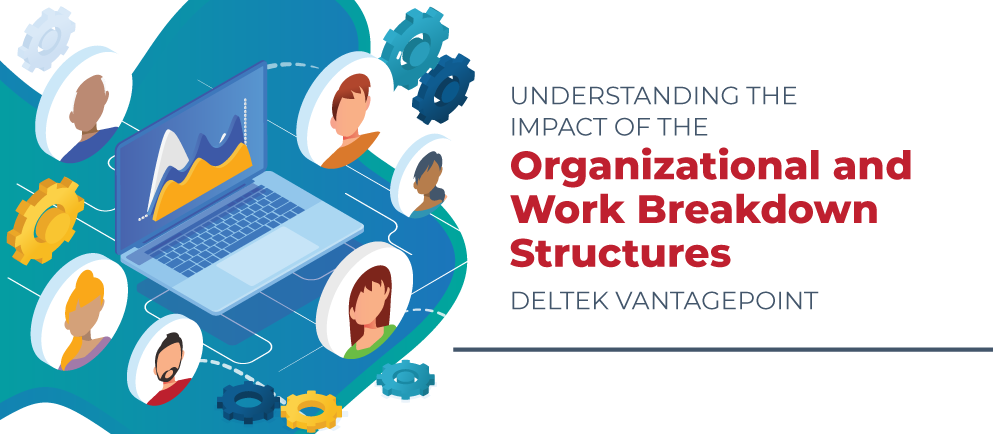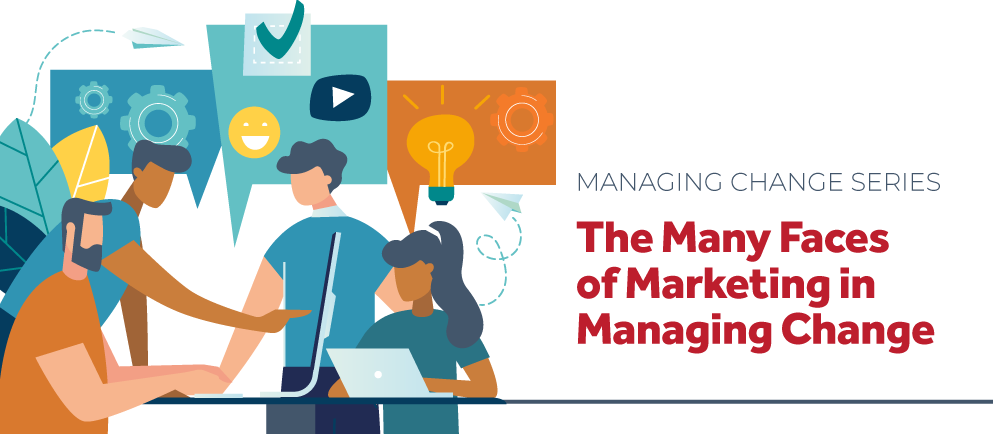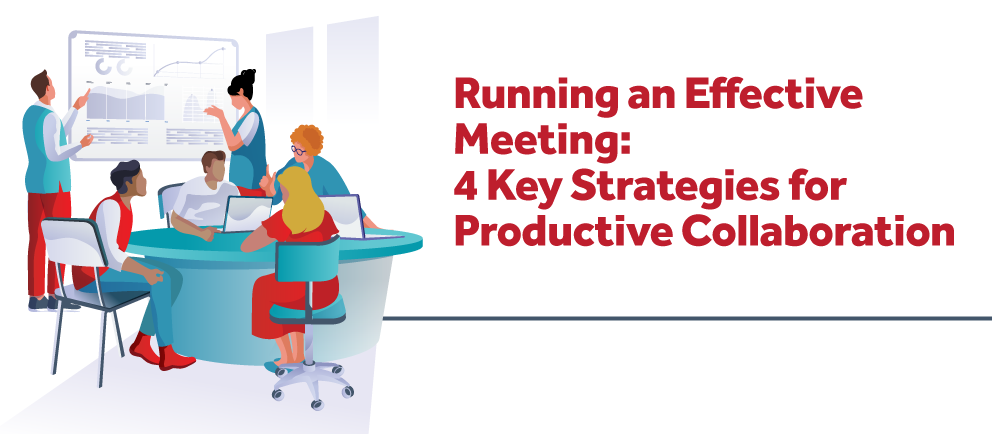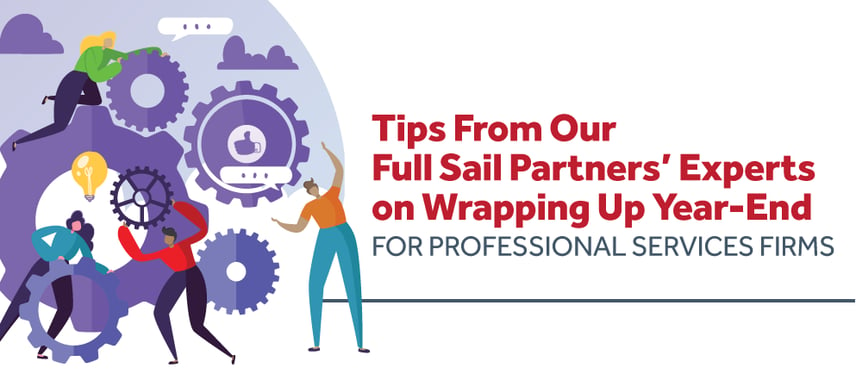
The end of the year is just around the corner, and with so much left to do, we'd like to offer you insights from our team to ensure the transition into the new year is as seamless as possible. Each person brings a unique viewpoint, and together, we've compiled a practical guide for professional services firms. It's more than just a checklist—it's a roadmap to help you tackle the challenges and opportunities that come with wrapping up one fiscal year and starting another. So, let's jump into these tips from our experts and get ready for a smooth transition into the new year.
Streamlining Your Project Pipeline in Deltek Vantagepoint CRM
As we approach the end of the year, we first must emphasize the importance of reviewing and refining the project pipeline in Deltek Vantagepoint CRM. This strategic move goes beyond database maintenance; it ensures a more accurate forecast of potential revenue for the upcoming year.
Our Marketing Manager, Lindsay Diven, suggests focusing on these tasks:
Assess Project Stages and Estimated Fees
Evaluate the current pursuit stages of each project and categorize them based on proposal status, shortlisting, or other decision stages. This step helps understand resource engagement and identify potential revenue stagnation points. Additionally, review estimated fees for relevance based on market trends and project scopes.
Update Probabilities and Close Dates
Review and adjust probabilities and close dates to reflect the current likelihood of project success. Pay special attention to potential projects with outdated close dates. This ensures a realistic view of the pipeline's health and potential revenue.
Take Decisive Action on Stale Pursuits
Avoid the common pitfall of holding onto pursuits unlikely to materialize. Take decisive action on pursuits with outdated close dates. Revive projects with potential, or close out those with no activity, allowing for a more focused pipeline.
To prepare for 2024, cleaning up the project pipeline is an essential step for professional services firms in preparing for the new year. Ensure the CRM reflects the most current and accurate data, enabling a strategic approach and better resource allocation for 2024.
Navigating Year-End Software Updates for Seamless Financial Operations
Regarding software, staying ahead of the curve will ensure the smooth continuation of your financial processes and position your professional services firm to adapt swiftly to any changes in tax regulations or reporting requirements.
The Crucial Role of Software Version Management
Heath Harris, our IT Services Support Manager, underscores the critical role of software version management as we approach the year-end. Specifically, he emphasizes the significance of ensuring that your professional services firm is operating on the latest two versions of Vantagepoint. This strategic move is not merely a technical necessity; rather, it holds the key to unlocking seamless year-end tax and 1099 updates within the Deltek Vantagepoint system.
The importance of this directive becomes even more apparent when considering the complexity of year-end financial processes. Staying current with software versions not only guarantees access to the latest features and enhancements but also safeguards your financial systems against potential vulnerabilities. In a landscape where regulatory changes can occur swiftly, being on the cutting edge ensures your financial team is well-equipped to handle any updates or modifications required for compliance.
Navigating Deltek Vision's Year-End Update
Heath also provides a heads-up about Vision's anticipated year-end update slated for mid-December. This message is particularly pertinent for those professional services firms relying on Vision for payroll processing and managing 1099s. Timely awareness of Vision's update schedule allows your team to plan and execute necessary updates and upgrades with precision.
Financial Preparedness for the New Fiscal Year
In navigating the complexities of financial management, one of our Senior Consultants, Lisa Ahearn, imparts two beneficial tips that can significantly impact your professional services firm’s fiscal preparedness for the upcoming year.
Initializing 1099 Reporting
Lisa's first critical tip centers on the initiation of 1099 reporting. After completing the Accounts Payable (AP) payment runs for the current fiscal year, and upon opening the new fiscal year, Lisa advises firms to proactively initialize their 1099 reporting. This strategic move is not merely an administrative task but a pivotal step in ensuring that your organization is well-positioned for accurate and timely reporting as you transition into the new fiscal year. By initiating this process before any payments are made in 2024, you pave the way for a seamless and compliant handling of 1099 reporting obligations.
Initializing the New Benefit Accrual Year
Lisa's second tip underscores the importance of initiating the new benefit accrual year. After finalizing all benefit accruals and adjustments for the current fiscal year, and upon the commencement of the new fiscal year, Lisa recommends taking proactive steps to initialize the benefit year. This strategic move is a proactive measure that ensures your firm is ready to handle benefit accruals in the upcoming year efficiently. By initializing the benefit year before any accruals are done in 2024, you set the stage for accurate tracking and management of employee benefits, contributing to a smooth and compliant benefits administration process.
Elevating Year-End Efficiency with Vantagepoint 6.5 Features
Designed to enhance year-end processes and elevate overall operational efficiency, Joel Slater, our Client Solutions Manager, offers two game-changing features in Deltek Vantagepoint 6.5. These are invaluable tools that professional services firms should take advantage of during year-end transitions.
Unlocking Efficiency in Invoice Approvals
Joel highlights the power of Intelligent Character Recognition (ICR) in Vantagepoint 6.5, emphasizing its ability to perform Automated AP Magic. This cutting-edge feature streamlines the traditionally time-consuming task of invoice approvals. By leveraging ICR, professional services firms can automate the extraction of relevant data from invoices, saving substantial time and ensuring accuracy in the approval process. Joel's insight positions this feature as a cornerstone for organizations seeking to streamline financial workflows, a crucial aspect in ensuring a smooth year-end transition.
Visualizing Crucial Metrics with Precision
Joel also invites users to step into a KPI wonderland with the introduction of the Key Performance Indicator (KPI) Dashpart in Vantagepoint 6.5. This feature transforms data evaluation into a dynamic visual experience. Users can now highlight crucial metrics with conditional formatting, offering a comprehensive and visually engaging representation of key performance indicators. This not only enhances the clarity and insight derived from data but also empowers decision-makers with a more intuitive understanding of their professional services firm’s performance. As businesses navigate year-end reviews and planning, this becomes another invaluable tool for strategic decision-making and performance analysis.
Cultivating Positive Leadership for Year-End and Beyond
Finally, in the realm of leadership and team dynamics, Sarah Gonnella, our VP of Marketing and Sales, shares some interesting insights on the importance of fostering a positive workplace culture, especially pertinent during the holiday season and into the year-end. Her guidance extends beyond conventional business strategies, emphasizing the pivotal role of positive leadership in shaping a thriving and motivated team.
Advocating for compassion, active listening, constructive feedback, empowerment, and encouragement of self-care, she aims to create a supportive environment that acknowledges the human aspect of work. Sarah's holistic leadership philosophy serves as a compass, guiding teams not only through the holiday season but also into the new year, fostering resilience, innovation, and collective success.
Position Yourself for a Prosperous New Year
As we wrap up 2023 and get ready for whatever 2024 throws our way, our team at Full Sail Partners wants to share some helpful insights. We aim to make it easier for our clients and other professional services folks to handle year-end stuff smoothly and start the new fiscal year on a good note. Whether it's simplifying how you work, keeping up with software updates, or promoting positive leadership, we hope these tips come in handy as you finish up your year and kick off a new one. Looking for extra tips to ensure a successful year-end? Explore our webinar, "Sleigh Your Year-End with Full Sail Partners," and get even more valuable insights from our team!
